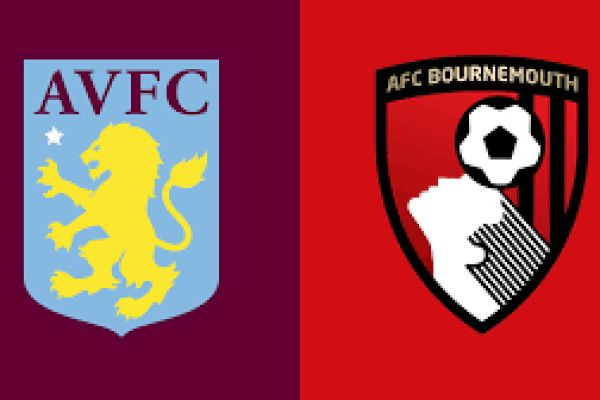The fixture between Aston Villa FC and AFC Bournemouth represents a captivating ideological clash in the modern Premier League. Under Unai Emery, Villa is defined by rigid structure, calculated build-up, and European ambition. In contrast, Andoni Iraola has instilled a high-pressing, high-octane dynamism at Bournemouth, prioritizing speed and disruption. This match will be won by the team that best imposes its will: Villa's desire for positional control, or Bournemouth's insistence on creating tactical chaos.
Aston Villa: Emery’s Positional Framework and High Line
Unai Emery’s system at Aston Villa is one of the most identifiable in the league, characterized by specific player roles and vertical attacking patterns, often deployed in a fluid $4-4-2$ or $4-2-2-2$ shape.
Villa's Strategic Pillars:
The High Defensive Line and Offside Trap: Villa defends with a notoriously high line, relying heavily on the collective understanding of their back four, marshalled by their central defenders, to spring the offside trap. This risks exposing their goalkeeper (Emiliano Martínez) but is fundamental to compressing the pitch and aiding their central press.
Central Control and Structure: The midfield pivot (usually Douglas Luiz and John McGinn) is paramount. Luiz acts as the deep distributor and anchor, while McGinn provides tireless running and aggression, often drifting wide to combine. Their ability to manage Bournemouth’s frantic central pressure will dictate the entire game's rhythm.
Vertical Threat via Half-Spaces: Villa’s most dangerous attacks are launched by quick vertical passes into the half-spaces (the channels between the centre-back and full-back). Players like Moussa Diaby and Leon Bailey are essential, using their searing pace to run onto balls played over the top or into these tight corridors. Ollie Watkins is the perfect spearhead, combining elite pressing with intelligent off-the-shoulder runs.
Villa's key vulnerability remains their high line. If the midfield press is bypassed or if a defensive switch is mistimed, a quick through-ball can leave an attacker running free at goal, which is precisely what Bournemouth is designed to achieve.
AFC Bournemouth: Iraola’s Relentless, Vertical Press
Andoni Iraola, hailing from the Basque school of high-intensity coaching, has forged a new identity for Bournemouth defined by aggression and speed in transition, utilizing a $4-2-3-1$ formation that shifts into a $4-4-2$ in the press.
Bournemouth's Strategic Mandate:
Aggressive High Press (Gegenpressing): Bournemouth will not sit back. Their defensive philosophy is their offensive one: aggressively hunt the ball in Villa's defensive third. They aim to disrupt Villa’s composed short-passing build-up, forcing turnovers in dangerous areas close to the goal.
Full-Backs as Wingers: Iraola demands that his full-backs attack the flanks relentlessly, joining the pressing lines and creating overloads when attacking. This verticality puts immediate stress on the opposition's wide defenders and midfielders.
Dominic Solanke as the Target: Dominic Solanke is the focal point, not just for scoring but for linking play and, critically, leading the press. His work rate is essential for isolating Villa’s centre-backs. The midfielders (e.g., Philip Billing or Lewis Cook) must quickly feed him or make aggressive runs beyond him the moment possession is regained.
Bournemouth’s weakness is the space they leave behind their aggressive pressing structure. If Villa’s technical players can execute a clean $2-3$ pass combination to break the first line of press, they will have wide-open territory to attack, potentially leaving the Bournemouth back four exposed.
Key Decisive Tactical Conflicts
The outcome of this fascinating match will hinge on three crucial tactical duels:
Villa's High Line vs. Bournemouth’s Pace: The defining battle will be whether Iraola's rapid attackers (Solanke, Tavernier) can time their runs to break the Villa offside trap. If Bournemouth can execute quick, long diagonals to bypass the high midfield, they will isolate the Villa centre-backs. If Villa holds the line perfectly, Bournemouth's energy will be wasted.
The Midfield Pivot Duel: The technical quality of Douglas Luiz and McGinn must overcome the pure intensity of Bournemouth’s midfield screen. If Luiz is afforded time to pick out passes to Diaby or Watkins, Villa will control the game. If Bournemouth’s midfield suffocates him, Villa will be forced long and into chaos, favoring the visitors.
Set-Piece Threat: Villa, historically under Emery, are exceptional from set-pieces, using height and drilled routines to score. Against Bournemouth's frantic open play, a single, clinical set-piece goal could be the difference-maker, neutralizing the Cherries' high-risk pressing efforts.
Cultural Context and Conclusion
This fixture represents a contest between two teams with firm ideas about how football should be played. Villa is striving for consistency at the European level, where pragmatic wins are essential. Bournemouth, meanwhile, embodies the spirit of an ambitious club unafraid to play attacking, high-risk football to establish its Premier League identity.
Expect a high-energy contest with periods of chaos. The technical superiority of Villa and the advantage of playing at home should see them narrowly edge the result, but not before being severely tested by Bournemouth's relentless pace and press. A tight $2-1$ victory for Aston Villa, likely decided by a moment of transition speed or a set-piece, is the probable outcome.








